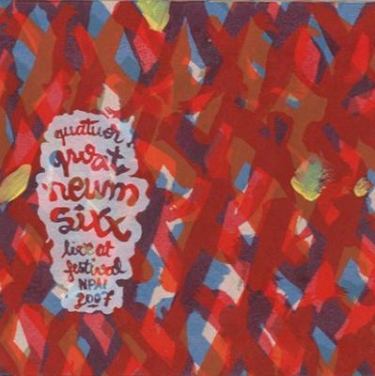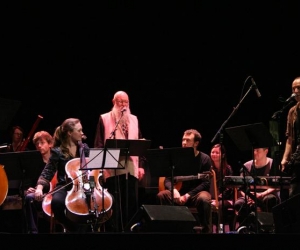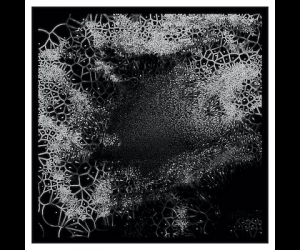
With textures and timbres often as inscrutable as the band’s name, four of France’s most accomplished improvisers explore non-idiomatic sounds. This continuous, though segmented, performance is not only tonally mesmerizing, it also negates, through the use of extensions and techniques, the differences between acoustic and electronic instruments.
A self-described “outlaw in jazz,” baritone saxophonist Daunik Lazro has followed his own muse for decades. Here, his nephritic timbres and unexpected upward twists produce as many oscillations as the static loops and patches exposed from Jérôme Noetinger’s table-top electronics. Meantime, while Michael Nick’s string-shaking, shuffle-bowing, and spiccato patterns extend the violin’s range, Sophie Agnel hardly touches the piano keys, preferring to create her own aesthetic with resonation, thumps, and clanks that become available when internal strings are first prepared, and then plucked, strummed, or stroked.
Dazzling above all else is the centre section of this narrative, where Noetinger’s motor-driven relation to musique concrète is transformed, his output becoming as viscous and diaphanous as the contributions of his bandmates. From among the furiously angled fiddle-string sawing, defiantly acoustic continuous saxophone breaths, and muscular string strokes which alter the piano’s action, there arises a multifaceted, multidirectional theme. In the countdown to the finale, it aurally exposes both the massed polyphonic texture and the individual variations, including reed spetro-fluctuation, whining string dislocation, and waveform feedback.
Although it may be tricky to remember Quator Qwart Reum Six’s odd moniker, the band’s music is worth the linguistic brain-tease.


